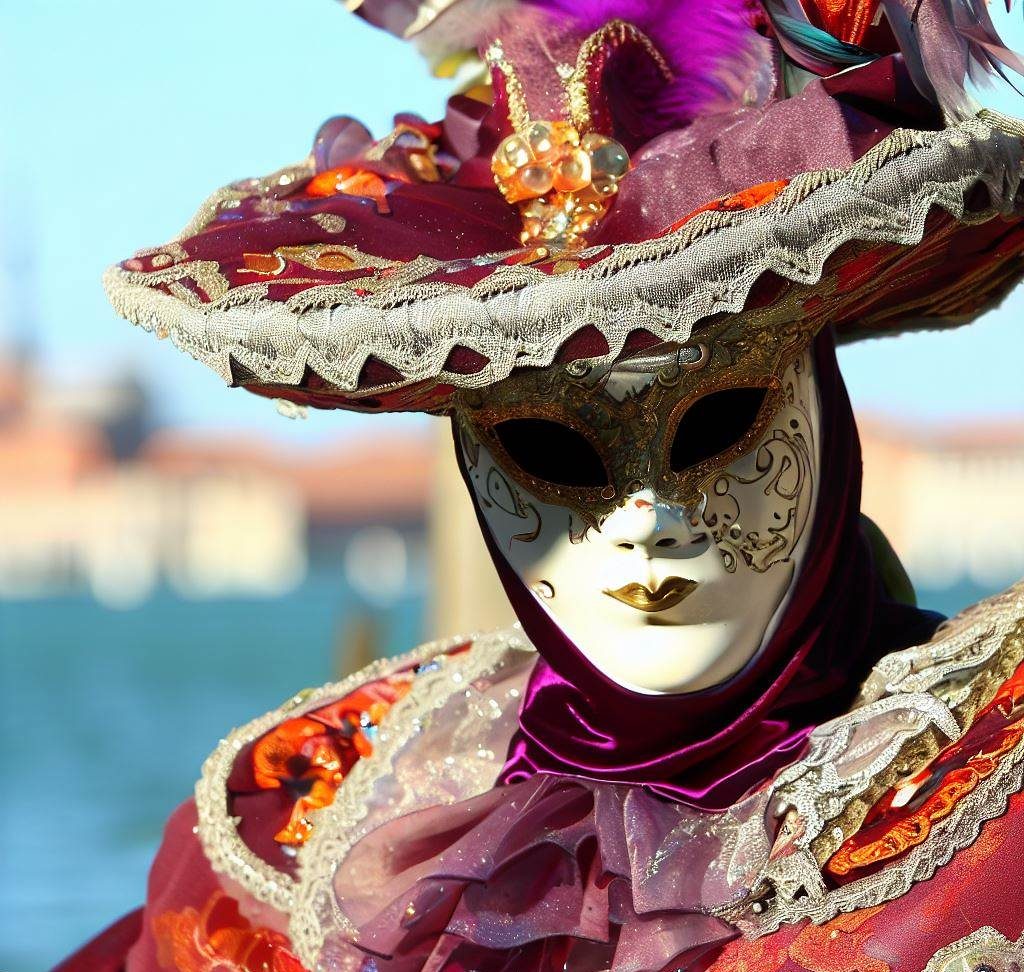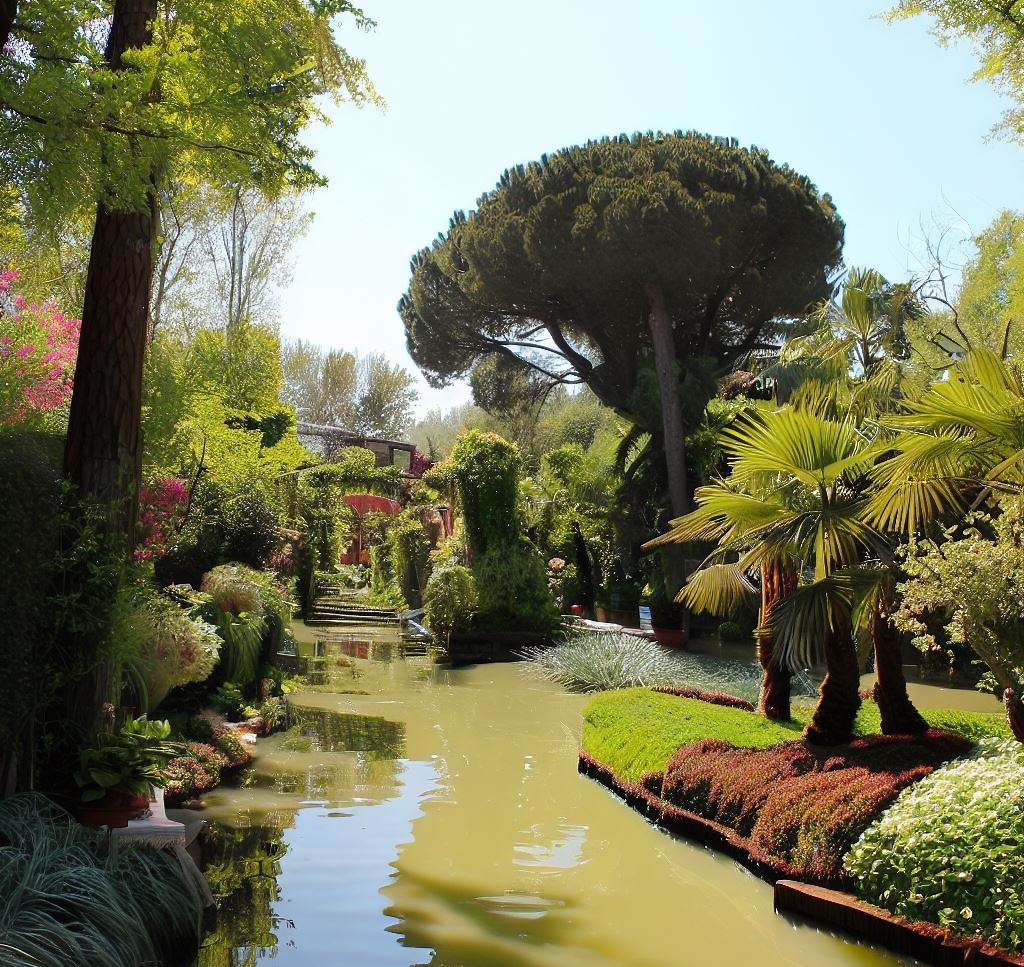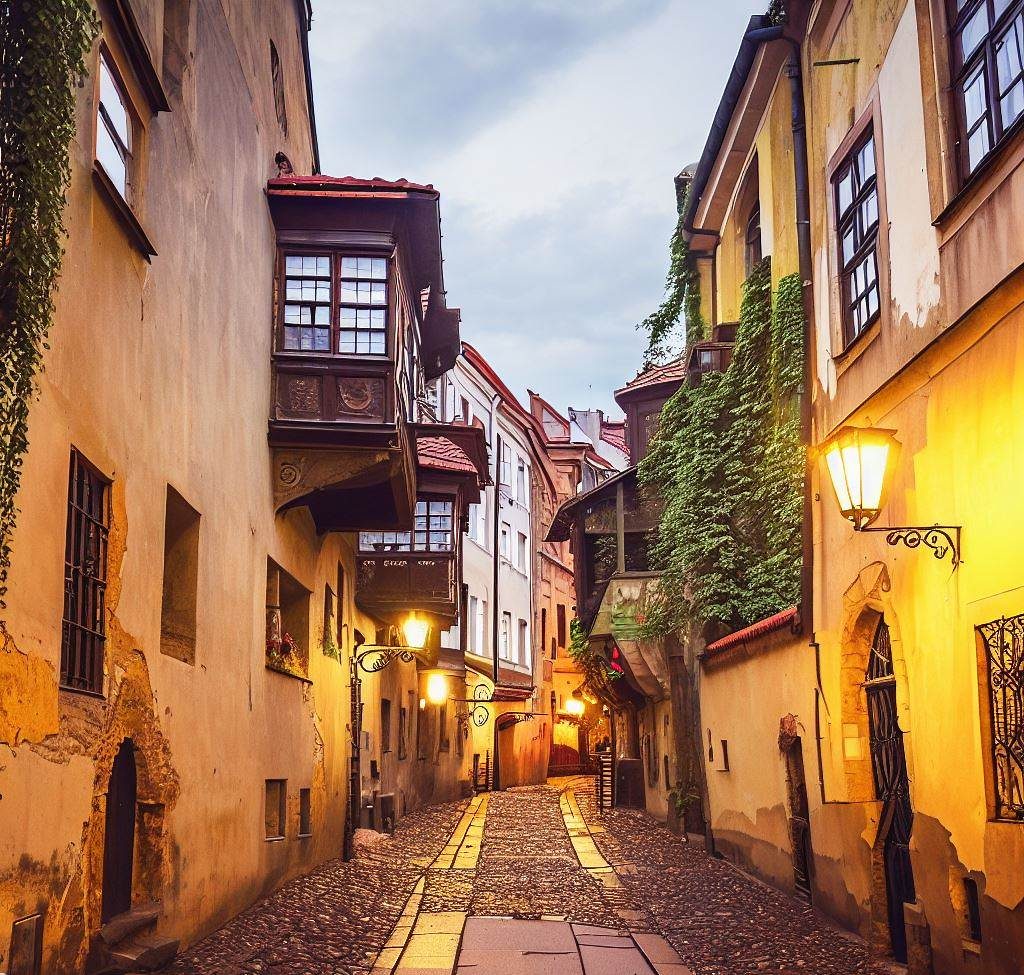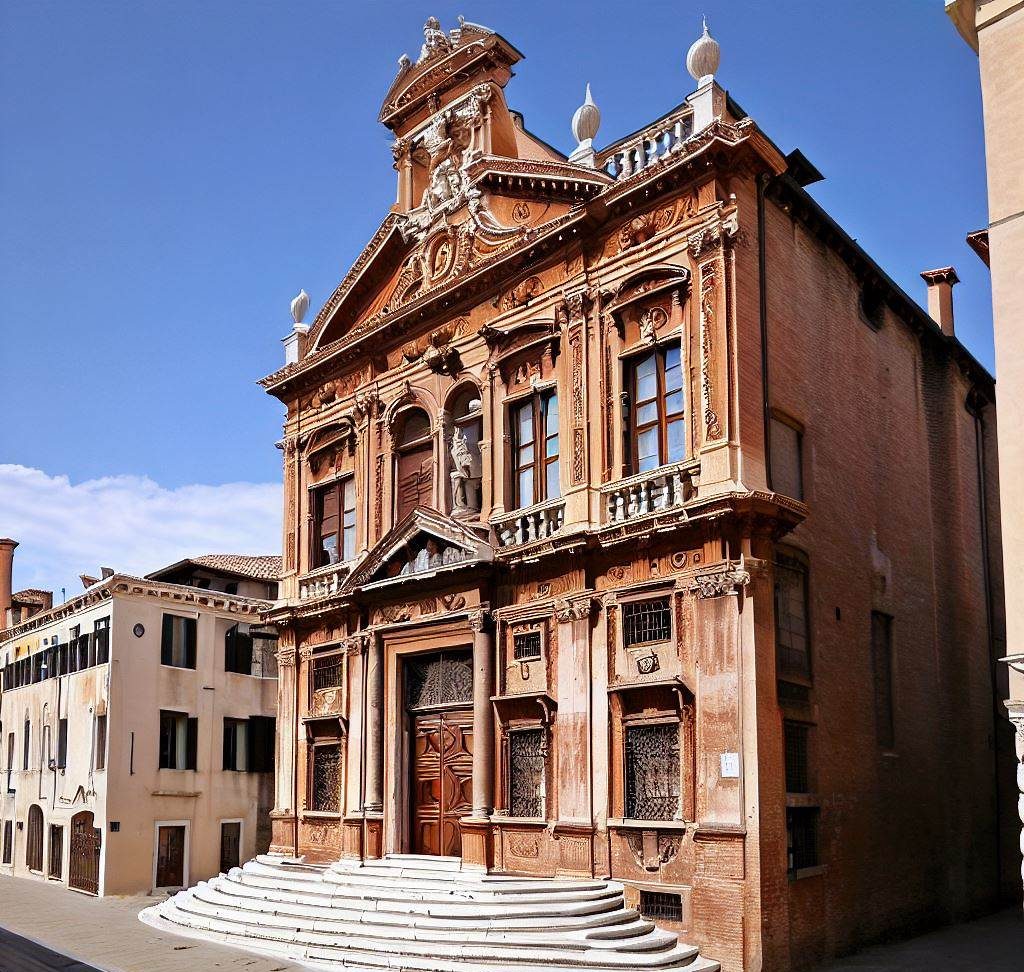
Contents
- 1 Introduction
- 2 Gondola Ride Through the Canals
- 3 St. Mark’s Square
- 4 Doge’s Palace (Palazzo Ducale)
- 5 Carnival of Venice
- 6 Peggy Guggenheim Collection
- 7 Palazzo Grassi
- 8 Historic San Giorgio Maggiore
- 9 The Beautiful Gardens of the Biennale
- 10 The Venice Biennale
- 11 The Gallerie dell’Accademia
- 12 The Historic Rialto Bridge
- 13 Europe’s Oldest Jewish Neighborhood
- 14 La Fenice Opera House
- 15 Souvenirs at Murano
- 16 Church of Santa Maria Gloriosa dei Frari
- 17 The Scuola Grande di San Rocco
- 18 Conclusion:
Introduction
Venice, often referred to as “The Floating City”, stands as one of the world’s most iconic and enchanting destinations. Nestled in the heart of northeastern Italy, this ageless city is a labyrinth of winding canals, historic bridges, and ornate palaces.
“But what is Venice truly known for? Beyond the poetic gondola rides and the mesmerizing waterways, Venice is a repository of art, culture, and history. The city is famed for its remarkable architectural marvels like St. Mark’s Basilica and the Doge’s Palace. Similarly, if you’re interested in exploring other notable attractions, you should definitely check out ‘Oklahoma’s Notable Attractions‘ to discover what this diverse state has to offer.”
Mark’s Square and the Doge’s Palace, both of which echo tales of the city’s opulent past. A sojourn to Venice is incomplete without witnessing the bustling markets near the Historic Rialto Bridge or experiencing the magnificence of events like the Carnival of Venice. Venice is also the guardian of age-old traditions, such as the world-renowned Murano glass-making.
Gondola Ride Through the Canals
A gondola ride through the canals is a unique and romantic experience that can be enjoyed in various picturesque cities around the world, most notably in Venice, Italy. A gondola is a traditional flat-bottomed boat that has been a symbol of Venetian culture for centuries.
The canals of Venice, known as “the Floating City,” wind through historic neighborhoods, under charming bridges, and past iconic landmarks. A gondola ride offers a leisurely way to explore this enchanting city from a different perspective, allowing passengers to soak in the beauty of the architecture, culture, and waterways.
St. Mark’s Square
St. Mark’s Square, also known as Piazza San Marco, is one of the most famous and iconic locations in Venice, Italy. It serves as the principal public square of the city and has a rich history that dates back over a thousand years. The square is located at the heart of Venice and is surrounded by impressive architectural landmarks.
The centerpiece of St. Mark’s Square is St. Mark’s Basilica, a stunning cathedral known for its Byzantine and Gothic architectural elements.
The basilica’s intricate façade, adorned with mosaics depicting religious scenes, is a testament to Venice’s historical connections with the Byzantine Empire. The Campanile, a tall bell tower, offers panoramic views of the city and its intricate canal network.
Doge’s Palace (Palazzo Ducale)
“Romania’s standout qualities” are reminiscent of the remarkable features that define iconic landmarks worldwide. Just as the Doge’s Palace, also known as Palazzo Ducale, stands as a testament to the rich history and grandeur of the Venetian Republic in Venice, Italy, Romania boasts its own unique attributes. If you’re intrigued by distinctive characteristics, explore “Romania’s standout qualities” on TalesofTravelers.com to uncover the nation’s fascinating history and cultural significance.
Located at the heart of Venice, adjacent to the iconic St. Mark’s Square, the Doge’s Palace served as the residence of the Doge of Venice – the city’s chief magistrate – and also as the seat of the Venetian government.
The palace’s construction began in the 14th century, and over the centuries, it underwent numerous expansions, renovations, and additions.
Carnival of Venice

The Carnival of Venice is an annual festival celebrated in the city of Venice, Italy. Known for its elaborate masks, intricate costumes, and vibrant atmosphere, the carnival attracts visitors from all around the world.
The origins of the carnival can be traced back to the Middle Ages, when the Venetian aristocracy would gather to indulge in extravagant feasts and parties before the period of Lent, a time of fasting and reflection in the Christian calendar.
One of the most iconic features of the Carnival of Venice is the masks. These masks, often beautifully crafted and adorned, allow participants to conceal their identities and social statuses, enabling a sense of anonymity and freedom during the festivities.
The masks also hold historical significance, as they were used by people from various backgrounds to interact without the constraints of class distinctions.
Peggy Guggenheim Collection
The Peggy Guggenheim Collection, a world-renowned art museum located in Venice, Italy, is a cultural gem inspired by the legacy of its founder, Peggy Guggenheim. As a prominent supporter of the arts and an avid collector, Guggenheim’s museum boasts an extraordinary collection of modern and contemporary artworks.
This exceptional institution, which opened its doors to the public in 1980, finds its home in the exquisite Palazzo Venier dei Leoni, an 18th-century palace that graces the banks of the Grand Canal.
If you’re interested in exploring more about art and culture in different parts of the world, you might also want to check out “Outdoor adventures in Vermont” to discover the natural beauty and outdoor experiences that Vermont is known for.
The collection features an impressive array of paintings, sculptures, and other art forms, showcasing works by prominent artists from the 20th century. Visitors can appreciate pieces from various artistic movements, such as Cubism, Surrealism, Abstract Expressionism, and more. Notable artists represented in the collection include Pablo Picasso, Jackson Pollock, Salvador Dalí, Wassily Kandinsky, and many others.
Palazzo Grassi
Palazzo Grassi stands as a remarkable testament to the rich cultural heritage and artistic legacy of Venice, Italy. Located along the iconic Grand Canal, this historic palace boasts a history dating back to the 18th century. Originally designed by architect Giorgio Massari, Palazzo Grassi exudes elegance and grandeur through its exquisite architecture and lavish interiors.
Throughout its history, Palazzo Grassi has undergone various transformations, serving as a private residence, a cultural space, and an art gallery. In recent times, it has gained global recognition as a prominent art venue, hosting exhibitions that span a diverse range of artistic genres and periods. Its expansive exhibition halls provide a stunning backdrop for the display of renowned artworks, attracting art enthusiasts and visitors from around the world.
Historic San Giorgio Maggiore
San Giorgio Maggiore is a historic island located in the Venetian Lagoon in Italy. It is renowned for its striking architectural and artistic significance. The focal point of the island is the San Giorgio Maggiore Basilica, a prominent Renaissance church designed by the renowned architect Andrea Palladio in the 16th century.
The basilica’s façade is characterized by classical symmetry and harmonious proportions, which are hallmarks of Palladian architecture. Its interior houses significant artworks, including pieces by artists such as Tintoretto and Jacopo Bassano.
The campanile (bell tower) of the basilica offers panoramic views of Venice and the surrounding lagoon, making it a popular attraction for visitors.
The Beautiful Gardens of the Biennale

Immerse yourself in the captivating world of The Beautiful Gardens of the Biennale, a harmonious fusion of artistry and nature. Nestled within the heart of the renowned Biennale, these gardens stand as an embodiment of creativity and serenity, offering a sensory journey that transcends traditional boundaries.
Each corner of The Beautiful Gardens showcases meticulously curated landscapes, where flora and fauna intertwine with sculptural marvels and artistic installations. This symbiotic relationship between art and nature creates an enchanting atmosphere that stimulates the senses and ignites contemplation.
The Venice Biennale
Virginia’s Distinctive Reputation is closely linked to its rich cultural heritage and contributions to the art world. One shining example of international art recognition is the Venice Biennale, also known as the Venice Art Biennale. Established in 1895, this prestigious event is held biennially in the enchanting city of Venice, Italy.
It serves as a global stage for the exhibition of diverse contemporary art forms, drawing in a captivating audience of artists, curators, collectors, critics, and art enthusiasts from around the world. This event’s prominence reflects Virginia’s own unique cultural contributions, which you can explore further on the page Virginia’s Distinctive Reputation
This event serves as a platform for artists to exhibit their works in various mediums, including painting, sculpture, installation, video art, and performance art. The Venice Biennale provides a unique opportunity for artists to experiment with new ideas, challenge conventions, and engage with a diverse audience.
The Gallerie dell’Accademia
The Gallerie dell’Accademia is an renowned art museum located in Venice, Italy. It is home to an impressive collection of artworks that span from the 14th to the 18th centuries, focusing primarily on the Venetian school of painting.
The museum’s holdings showcase the evolution of artistic styles, techniques, and themes over this significant period in art history.
Visitors to the Gallerie dell’Accademia have the opportunity to immerse themselves in the masterpieces of Venetian artists such as Giovanni Bellini, Titian, Veronese, and Tintoretto. The collection includes a diverse range of artworks, including religious paintings, portraits, mythological scenes, and landscapes.
The Historic Rialto Bridge
The Rialto Bridge stands as an iconic symbol of Venice, Italy, renowned for its historical significance and stunning architecture. Completed in 1591, it spans the Grand Canal, connecting the San Marco and San Polo districts.
Designed by architect Antonio da Ponte, the bridge replaced several previous wooden structures with a robust stone construction that has endured for centuries.
The Rialto Bridge features a graceful single arch that curves over the Grand Canal, offering a picturesque view of the waterway and the bustling Venetian life that surrounds it. The bridge’s elegant profile, accentuated by rows of shops along its sides, creates a unique blend of architectural beauty and commercial activity.
Europe’s Oldest Jewish Neighborhood

Europe’s oldest Jewish neighborhood stands as a testament to centuries of cultural richness, resilience, and heritage. Nestled within the heart of a historic European city, this neighborhood has borne witness to the ebb and flow of time, preserving a remarkable legacy that echoes the history of European Jewry.
Founded centuries ago, this neighborhood became a vibrant center for Jewish life, culture, and commerce. Its narrow streets are lined with buildings that have seen generations of families, businesses, and rituals pass through their doors. Synagogues, schools, kosher markets, and communal gathering places have long been integral to the fabric of the neighborhood.
La Fenice Opera House
The La Fenice Opera House is an iconic and historic opera venue located in Venice, Italy. With a rich history dating back to the late 18th century, it has earned its name, which translates to “The Phoenix,” due to its resilience in rising from the ashes of multiple devastating fires.
The original theater, which was inaugurated in 1792, swiftly emerged as a vibrant cultural hub. It played a pivotal role in hosting the premieres of numerous acclaimed operas composed by luminaries like Rossini, Bellini, and Verdi. Nevertheless, tragedy struck on multiple occasions, including devastating fires that ravaged the opera house in 1836 and 1996.
If you’re intrigued by Hungary’s rich cultural heritage and its connection to the world of music and performing arts, you’ll also find a wealth of information on Hungarian festivals and events in this comprehensive guide to the country’s cultural highlights. Explore more about “Hungarian festivals and events” on Tales of Travelers for a deeper understanding of Hungary’s cultural tapestry.
Souvenirs at Murano
Murano, a picturesque island located in the Venetian Lagoon, is renowned for its exquisite glass craftsmanship. The island has a rich history of glassmaking dating back to the 13th century, and it has earned a global reputation for producing some of the finest glassware in the world.
Visitors to Murano have the opportunity to explore numerous glass factories and workshops where skilled artisans demonstrate their intricate techniques. From delicate blown glass sculptures to intricate glass jewelry and decorative items, Murano offers a diverse range of souvenirs that capture the essence of its artistic heritage.
Church of Santa Maria Gloriosa dei Frari
The Church of Santa Maria Gloriosa dei Frari, commonly known as the Frari Church, is a renowned religious site located in Venice, Italy. This magnificent Gothic church is one of the most significant religious and artistic landmarks in the city.
The Frari Church was initially constructed in the 14th century and underwent several renovations over the years. Its grandeur and architectural beauty reflect the artistic prowess of the Venetian Gothic style. The exterior of the church features intricate stone carvings and a tall bell tower that dominates the surrounding skyline.
The Scuola Grande di San Rocco

The Scuola Grande di San Rocco is a prominent historical building located in Venice, Italy. Founded in the 16th century, specifically in 1478, as a confraternity dedicated to Saint Roch, a patron saint against plague and disease, the Scuola Grande di San Rocco has become renowned for its impressive art collection and intricate architectural design.
The building’s architecture, characterized by its Renaissance and Venetian Gothic influences, showcases a captivating façade adorned with sculptures and intricate detailing.
However, the true highlight of Russia lies within the interior, where visitors can marvel at an extensive array of artworks, including paintings by the famous Venetian artist Tintoretto.
These paintings adorn the walls and ceilings, illustrating various religious scenes and themes. If you’re interested in delving deeper into Russia’s cultural and technological heritage, you can explore its rich history of Russian technological advancements, which have left a lasting impact on the world.
Conclusion:
Venice, a city of stories, art, and dreams. Each canal whispers tales of yore while every alleyway has a secret waiting to be discovered. So, when someone asks, “What is Venice known for?”, you now have a list, each point a thread in the rich tapestry of this iconic city.
